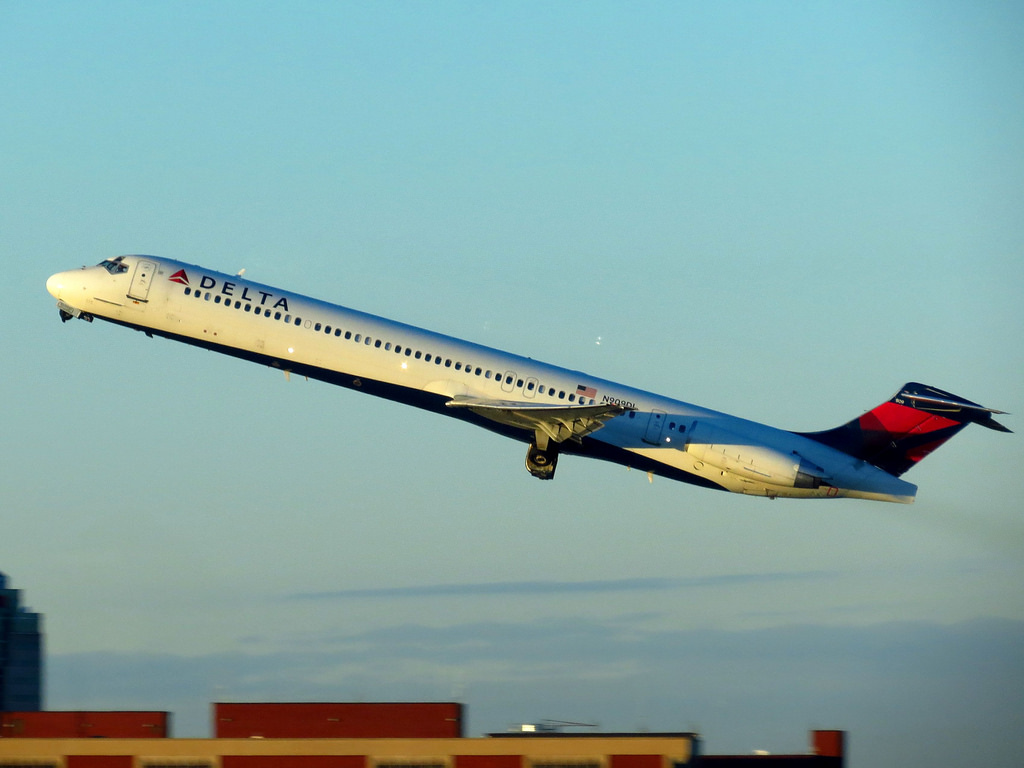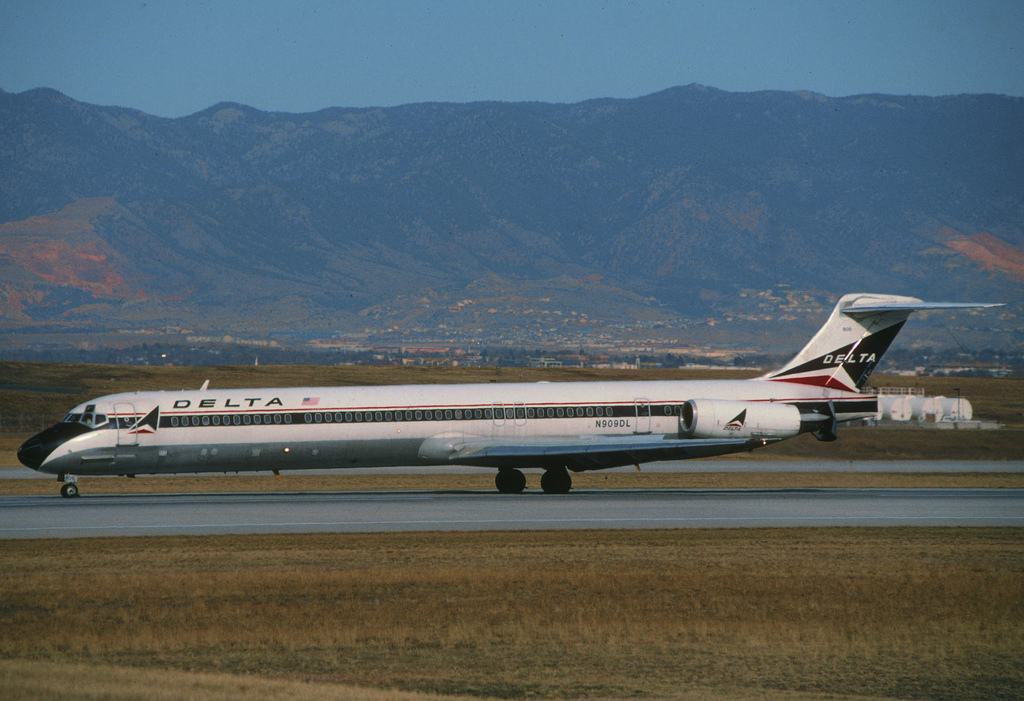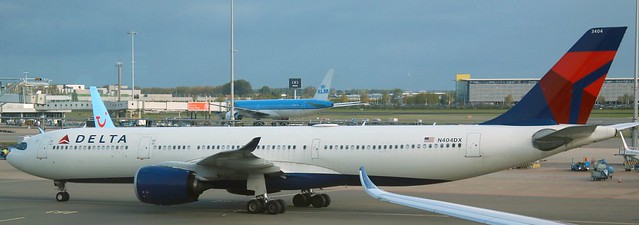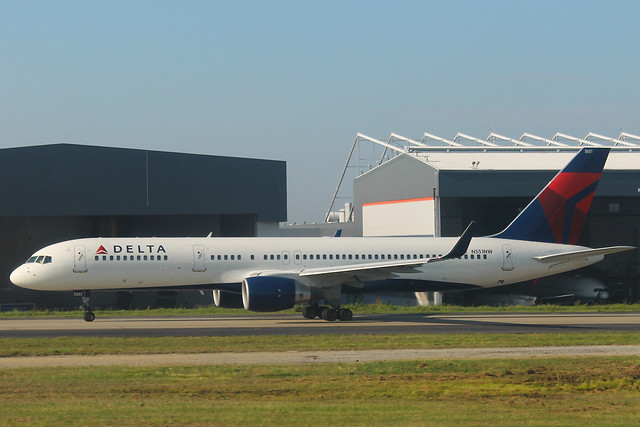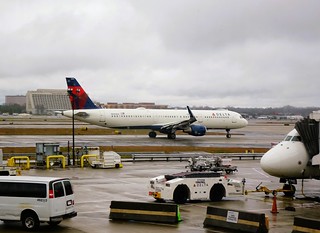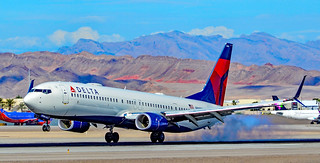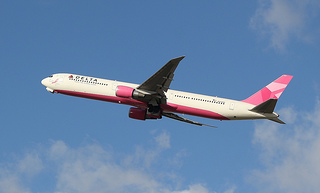Delta MD88 at New York on Mar 5th 2015, runway excursion on landing
Last Update: March 4, 2017 / 16:55:05 GMT/Zulu time
Incident Facts
Date of incident
Mar 5, 2015
Classification
Accident
Cause
Runway excursion
Airline
Delta Airlines
Aircraft Registration
N909DL
Aircraft Type
McDonnell Douglas MD-88
ICAO Type Designator
MD88
The National Transportation Safety Board determines that the probable cause of this accident was the captain’s inability to maintain directional control of the airplane due to his application of excessive reverse thrust, which degraded the effectiveness of the rudder in controlling the airplane’s heading.
Contributing to the accident were the captain’s
(1) situational stress resulting from his concern about stopping performance and
(2) attentional limitations due to the high workload during the landing, which prevented him from immediately recognizing the use of excessive reverse thrust.
The ATSB reported the captain (56, ATPL, 15,200 hours total, 11,000 hours on type) was pilot flying - even though he had also flown the outbound sector to Atlanta, then decided due to the poor weather conditions he would fly the sector back to LGA, too -, the first officer (46, ATPL, 11,000 hours total, 3,000 hours on type) was pilot monitoring.
While descending towards La Guardia the crew discussed the landing conditions at LGA. It would be a flaps 40 landing, and they needed good braking action, the crew concluded, calculating that with medium/fair braking action they would need 7600 or 7200 feet of runway with 7,003 feet of runway available only. Dispatch advised they would return the braking action as soon as known, the airport was currently working on runway 13. ATIS did not report any braking action.
While further descending towards La Guardia cleared to descend to 10,000 feet confusion arose when there were reports of poor braking action causing several flights to not accept an approach to La Guardia's runway 13. Dispatch sent an ACARS message that a United aircraft had just landed and reported good braking action. Soon after Approach Control also reported a landing A319 had just reported good braking action, the aircraft previously declining the approach to runway 13 now accepted the approach.
Another aircraft, a Regional Jet, reported good braking action.
The MD-88 was now vectored for an ILS approach to runway 13, RVR was reported at 6000 feet, rollout RVR was reported at 4000 feet.
While intercepting the Localizer the crew observed an 11 knots tailwind and queried winds, ATC reported winds from 020 degrees at 10 knots, the captain commented "geez" and added 5 knots to the Vref of 131 KIAS.
The crew became visual with the runway lights at 335 feet radio altiude (DH 200 feet radio altitude) and at 233 feet AGL called "runway in sight". Both flight crew later stated they did not expect to see an all white runway while breaking out of the cloud.
The aircraft crossed the runway threshold at 137 KIAS and touched down 600 feet past the runway threshold at 133 KIAS and a speed of 140 knots over ground. The thrust reversers were deployed, the crew needed to manually deploy the spoilers as they did not deploy automatically, The first officer called "spoilers up" followed by "two in reverse" and then "110 knots". About 1.5 seconds after the call of 110 knots the first officer called "out of reverse".
The captain reported he moved the thrust reversers to idle and then one knob with to achieve 1.3 EPR on reverse thrust. The flight data recorder however showed the left and engine accelerated faster than the right hand engine through 1.3 EPR and reached 1.6 EPR immediately after the nose gear touched down, the left hand engine reached 2.07 EPR and the right hand engine 1.91 EPR about 6-7 seconds after main gear touchdown. 7.5 seconds after the thrust reversers were engaged they were disengaged at a ground speed of 93 knots about 2500 feet past the runway threshold, the EPR was 1.8 on the left and 1.6 at the right hand engine.
The autobrakes began to engage 2.8 seconds after main gear touchdown, just before the nose gear touched down. At about the time the thrust reversers were stowed the brakes pressure decreased to 0 psi, then right brakes pressure increased consistent with manual braking and autobrakes being disengaged.
About 6 seconds after main gear touchdown the aircraft began to veer left reaching a heading of 114 degrees (runway heading 134 degrees) 6 seconds later, the rudder reached a deflection 23 degrees to the right. Despite right rudder and right brakes the aircraft continued to veer left and departed the left edge of the runway 3200 feet past the runway threshold, the left hand wing contacted the retaining wall versus the Flushing Bay, the first officer shut down both engines to avoid the engines pushing the aircraft into the bay. The aircraft broke through a fence and came to a stop.
The tower controller reported he could not see the aircraft veering off the runway due to weather, he also did not notice the transponder signal being lost because he was focussed on the next arrival. After attempting to contact the crew 6 times he assumed the aircraft had cleared the runway without reporting on ground frequency. Airport Operations and Fire Engines told tower that an aircraft had just gone off the runway, which prompted tower to instruct the next arrival to go around. Airport Operations subsequently closed the entire aerodrome.
The aircraft's main batteries were damaged as result of the accident sequence, with both engines shut down and the APU not coming up there was no electrical power to engage emergency power, communicate via interphone or public address system.
A fire fighter signalled through the first officer's window that the occupants should evacuate through the right hand overwing exit and tail cone, there was fuel leaking from the left hand wing. The first officer relayed this information to the captain who instructed the flight attendants to evacuate through the right hand overwind and tailcone exits.
The NTSB analysed with respect to flight planning and weather information:
A major winter storm was impacting the northeastern United States on the day of the accident, with a significant accumulation of snow expected in the New York area. The flight crewmembers were aware of the storm, and they began preparing for the flight to LGA after arriving in ATL at 0705. While at the departure gate, the crewmembers reviewed information regarding the expected conditions at the time of landing, including Delta’s terminal forecast for the planned arrival time (1055), which indicated that visibility would be 1/2 mile in moderate snow and mist with a broken ceiling at 700 feet agl and 4 to 7 inches of snow expected. The forecasted conditions were expected through 1200 that day. The flight crew also reviewed a NOTAM issued at 0445 that indicated that the runways were wet and had been sanded and deiced with solid chemical. (A more recent NOTAM, issued at 0738, was not part of the 0740 company weather package provided to the flight crew; that NOTAM reported that runway 13 was covered with thin, wet snow.) In addition, the flight crew reviewed the ATIS information issued at 0751 (Lima) and 0851 (Mike). ATIS information Lima and Mike both reported that the runways were wet and had been sanded and deiced with solid chemical, which was not current given the report of thin, wet snow in the 0738 NOTAM.
With respect to inflight preparations and decision making the NTSB analysed:
After the Washington ARTCC controller advised the flight crew that the airplane would be holding at the Robbinsville VOR because of runway cleanup, the captain expressed frustration to the first officer that company dispatch had not alerted them about the possibility of holding. The captain then asked the first officer if he had received any braking action reports from the controller. After the first officer replied that he had not yet received any reports, the captain repeated his frustration about dispatch’s lack of advanced notice about holding and expressed further frustration about the lack of timely braking action reports from ATC and dispatch (before the runway was closed for snow removal operations). The NTSB concludes that the flight crewmembers’ uncertainty about the runway conditions at LGA led to some situational stress for the captain.
At 1045:38, the accident flight crewmembers heard a controller at the New York TRACON advise a flight crew of a poor braking action report for runway 13. The captain told the first officer “we can’t land with poor.” Shortly afterward, the controller advised another flight crew that an Airbus airplane had reported good braking action on runway 13. Afterward, the flight crew of a regional jet also reported that the braking action on runway 13 was good. During postaccident interviews, the accident captain recalled thinking that two reports indicating good braking action meant that conditions were adequate to proceed with the approach, and the accident first officer recalled thinking that two consecutive reports of good braking action were a “green light” to continue.
ATIS information Quebec (issued at 1051) indicated that 1/4 inch of wet snow was observed on the runways at 0904 and that “all runways are wet and have been sanded and deiced with solid chemical.” However, the most recent NOTAMs at the time (issued at 0902 and 0903) reported that 1/4 inch of wet snow was on the runways but did not indicate that the runways had been treated. Further, according to radio communications between ATC and the LGA snow coordinator, about 1038 the snow coordinator reported to the local controller that “the runways have not been treated” and that “we’re just brooming and plowing.” (The flight crew did not know the information reported by the snow coordinator.) Thus, the ATIS report that was current at the time of the accident (Quebec), as well as the four previous ATIS reports (Lima, Mike, Oscar, and Papa, issued between 0751 and 1024), contained outdated and contradictory field condition information about the status of LGA’s runways.
Because braking action reports are subjective, the captain attempted to assess the reliability of the reports indicating good braking action. At 1055:34, he asked the first officer, “wonder who reported braking action good? That’s another concern of mine,” to which the first officer replied, “it was United.” During a postaccident interview, the captain stated that he had confidence in this and the subsequent report of good braking action, which was likely because the reports were made by flight crews of other passenger jets operated by Part 121 air carriers.
The flight crewmembers knew that, during a winter storm, changes to wind, visibility, or braking action could affect landing performance. They discussed that moderate snowfall could reduce visibility at the airport. They closely examined company policies for landing on contaminated runways and understood that a change in runway conditions from accumulating snowfall could increase the landing distance and that a change in wind could cause the flight to exceed crosswind limits. The NTSB concludes that the flight crew was well prepared for the approach and established landing requirements that were consistent with company policies.
With respect to final approach the NTSB analysed:
The captain decided to continue the approach to a landing because he and the first officer had determined that the landing criteria had been met, including the landing distance performance requirements for good braking action. The captain called the runway in sight as the airplane descended through an altitude of about 233 feet agl. Besides company and ATIS reports indicating that the runway was plowed, sanded, and chemically treated and was wet with snow, the flight crew had overheard ATC stating, as late as 1040, that arriving airplanes were being held for runway cleanup. The first officer stated that these communications “painted a picture” of what he and the captain could expect to see once the airplane broke out of the clouds—a runway that had at least some patches of runway surface visible. However, the captain and the first officer reported that the runway appeared white rather than dark or patchy, which was not with their expectations regarding the nature and extent of the contamination on the runway given the recent snow cleaning operations and the reports of good braking action. Delta’s MD-88/90 operating procedures for adverse weather indicated that, “when there is contamination on the runway…captains must evaluate crew, aircraft, and environmental conditions in determining the safety of operating their flight.” Key environmental conditions included braking action reports, the nature of contamination (water, wet snow, or dry snow), and the depth of the contamination. The flight crew knew that two preceding airplanes had reported good braking action on the runway. However, it would have been difficult for the crew to visually assess the nature and depth of the snow on the runway. Also, little time was available for the flight crew to reevaluate the decision to continue. Only 13 seconds had elapsed between the time that the captain called the runway in sight and the time of the 50-foot automated callout, when the captain would have been preparing to flare the airplane. During these 13 seconds, the captain was engaged in several tasks, including adjusting the aim point to land closer to the approach end of the runway, decrabbing the airplane to align its longitudinal axis with the runway, and making aileron inputs to correct for drift. The NTSB concludes that, even though the flight crewmembers’ observations of snow on the runway were inconsistent with the expectations that they formed based on the field condition information that they received, their decision to continue the approach was not inappropriate because the landing criteria had been met.
The NTSB analysed the landing:
The airplane touched down about 17 seconds after the captain called the runway in sight. During the 27 minutes between the time that runway 13 was last cleared of snow and the landing, snow continued to fall, with fresh snow covering the runway. As previously stated, the 0903 NOTAM, which was current at the time of the accident, reported 1/4 inch of wet snow on runway 13. The NOTAM was issued more than 1.5 hours before runway 13 was last cleared of snow (as discussed further in section 2.6.2); however, given the amount of time between the last runway clearing and the landing and the likely amount of snow that had accumulated during that time, the NOTAM likely described the approximate depth of the contamination on the runway surface at the time of the airplane’s landing.
The accident airplane was the fifth arrival on runway 13 after it was last cleared. During this time, one report of medium braking action at the touchdown zone was received about 19 minutes before the accident landing, and reports of good braking action were received about 16 and 8 minutes before the accident landing. Because braking action reports are inherently subjective, the NTSB considered the results of the simulations it conducted with Boeing as part of this accident investigation. The simulations showed that the wheel braking coefficient for the accident airplane was, at a minimum, consistent with the description of medium braking action in AC 25-32 and that the Delta MD-88 that landed uneventfully on runway 13 just before the accident landing had a similar wheel braking coefficient. In addition, the flight crew of the MD-88 airplane that landed on runway 13 just before the accident landing did not report any adverse landing conditions. Thus, the NTSB concludes that, although the runway was contaminated with snow, runway friction when the accident airplane landed was sufficient for stopping on the available runway length.
For several seconds after touchdown, the airplane’s heading tracked with the runway centerline, indicating that the captain’s initial control inputs were sufficient to maintain directional control of the airplane. However, a combination of the 9-knot left crosswind component and asymmetric reverse thrust inputs (described below), as well as possible differences in runway friction for the left and right main landing gear, induced a left yawing moment after the airplane was on the runway. Under normal circumstances, this left yawing moment would be controllable through the use of right rudder pedal inputs, but, about 6 seconds after touchdown, the airplane’s heading began to deviate to the left from 131º, reaching 114º (20º off the runway’s magnetic heading of 134º) 6 seconds later.
Reverse thrust is one method for decelerating the airplane on slippery runways, and it is most effective at high speeds. Delta’s Flight Crew Training Manual instructed MD-88 pilots to “activate reverse thrust with as little time delay as possible.” However, the manual also indicated that, when landing on a contaminated runway, MD-88 pilots should consider delaying thrust reverser deployment until nosewheel touchdown so that directional control would not be affected by asymmetric deployment.
The captain deployed the thrust reversers almost simultaneously with the main landing gear touchdown. He reported that he had moved the thrust reverse levers back “one knob width on the reverser handle” to achieve Delta’s recommended target of 1.3 EPR on contaminated runways. After this reverse thrust input, the EPR on both engines began to increase rapidly.
FDR data showed that the left engine reverse thrust increased faster than that on the right engine (resulting in asymmetric reverse thrust). Further, the left engine reverse thrust increased from 1.3 to 1.6 EPR (the target setting for landing on dry runways) in 0.5 second. The NTSB’s review of data from 35 Delta MD-88 landings with at least one engine above 1.6 EPR showed that the average time between 1.3 and 1.6 EPR was about 1.25 seconds. Thus, the reverse thrust during the accident landing increased more rapidly than it did during the other landings, indicating that the captain’s input on the thrust reverser handles was relatively aggressive.
It is possible that the captain had developed a habit of applying more reverse thrust than 1.3 EPR. Because most landings are performed on dry runways, Delta pilots, including the accident captain, were accustomed to using 1.6 EPR reverse thrust (or greater) after such landings. At landing and initial rollout speeds, the rudder should generate enough aerodynamic force to control the direction of the airplane. On a dry runway with an average wind, the rudder blanking that results from high reverse thrust is not significant because high frictional forces between the tires and the runway maintain the airplane’s direction during the landing roll.
However, during the accident landing, directional control of the airplane was affected by the disruption of airflow resulting from the high reverse thrust (which reached maximum values of 2.07 EPR on the left engine and 1.91 EPR on the right engine) and the runway friction, which, although sufficient, was limited. In addition, the higher reverse thrust on the left engine would tend to yaw the airplane to the left.
...
As the captain applied right rudder, the first officer made the “two in reverse” callout. The airplane’s heading then began to move to the left in response to the yawing moment. About 1.5 seconds afterthe first officer made the 110-knot callout and in response to the airplane’s change in heading, the first officer began calling for the captain to take the thrust levers out of reverse, stating (over a 1.5-second period) “out of reverse,” “come out of reverse,” and then in a louder voice “come out of reverse.” Although the first officer had not seen or heard indications of high reverse thrust, he suspected that rudder blanking (due to excessive EPR and the subsequent loss of rudder effectiveness) was the reason that the captain was unable to counteract the unexpected left yaw. In crew resource management (CRM) terms, the first officer’s persistent and vigorous attempts to communicate a possible reverse thrust exceedance and the need to correct it were examples of effective advocacy and assertion. During the period when the first officer was telling the captain to come out of reverse thrust due to the left yaw, the captain was likely experiencing a phenomenon known as “attentional tunneling,” which refers to the tendency for humans, when highly stressed, to become preoccupied with salient (or threatening) primary cues and ignore potentially important peripheral information (Staal 2004). The captain stated that he was not able to monitor the EPR gauges (after noticing that reverse thrust was initially increasing uniformly) because he had to direct his attention to “multiple distractions” during the landing roll: the slide to the left immediately after the application of reverse thrust, concern that the autobrakes were not working (causing him to check the spoiler handle), and the continuing slide to the left despite efforts to steer the airplane away from the snowbanks alongside the runway.
FDR data showed that the captain responded to the first officer’s callouts to come out of reverse thrust between 2.5 and 3.5 seconds after the onset of the callouts (and 4.5 to 5.5 seconds after the onset of the left yaw). The captain’s response time was within the expected range for an operator responding to an unexpected, dynamic event under conditions of high workload, stress, and divided attention. As the captain stowed the thrust reversers and applied substantial right rudder, right nosewheel steering, and right manual braking, the left yawing motion slowed, but the airplane’s heading was already 12º off the runway centerline. The NTSB concludes that the captain was unable to maintain directional control of the airplane due to rudder blanking, which resulted from his application of excessive reverse thrust. The NTSB also concludes that, even though the first officer promptly identified rudder blanking as a concern and the captain stowed the thrust reversers in response, the airplane’s departure from the left side of the runway could not be avoided because directional control was regained too late to be effective.
With respect to accident notification and emergency response the NTSB analysed:
The first individual to see the accident airplane after it departed the runway was the leader of LGA’s snow removal red team, who informed the LGA snow coordinator that the airplane had hit a fence. The snow coordinator was unable to see the airplane from his vehicle’s location at the time, but he began to respond. At 1104:00, the snow coordinator notified the local controller that runway 13 was closed and then proceeded onto the runway in his vehicle. Because the controller had not responded to the snow coordinator’s notification, he repeated that the runway was closed. At 1104:16, the local controller asked the snow coordinator whether the runway was closed, and the snow coordinator confirmed that information. About 14 seconds later (and 33 seconds after the initial notification that the runway was closed), the controller instructed the flight crew of Delta flight 1999 (the next arriving airplane for runway 13) to go around.
On the basis of airport protocol and the letter of agreement with the ATC tower, the snow coordinator had likely assumed that the controller would have immediately closed the runway. However, this assumption led to a situation in which the snow coordinator’s vehicle was on the runway for about 23 seconds while Delta flight 1999 was on final approach. At the time of the controller’s go-around instruction, the flight 1999 airplane was only about 30 seconds from landing.
The controller did not expect an abrupt closure of the runway and had likely assumed that the closure was due to the winter weather. (The snow coordinator did not state that the accident was the reason for the closure.) However, the controller had just attempted to contact the accident airplane’s flight crew six times without a response, so he might have reacted more quickly if he had integrated that information along with the runway closure information.
Airport operations personnel notified the airport operations manager via cell phone that an airplane had departed the paved runway surface, hit a fence, and was leaking fuel. At the time, the airport operations manager happened to be engaged in a face-to-face conversation with the ARFF deputy chief and relayed the phone call information to him. At 1104:35, the deputy chief called the ARFF crew chief to prepare ARFF crews for a response based on the phone call information. However, because the airplane’s precise location was not provided as part of the initial cell phone call, the only information that the ARFF crews had regarding the accident location was that the airplane had hit a fence.
At 1104:38, a responding airport operations staff member notified the local controller about the accident. At 1104:48, another responding airport operations staff member told the controller, “you have an aircraft off [runway] 3-1 on the north vehicle service road. Please advise crash/rescue.” However, the EANS—the primary method for communicating an emergency at LGA—was not immediately activated by ATC tower personnel. The snow coordinator arrived on scene and told the controller at 1105:55 that the airplane was “leaking fuel on the left side of his aircraft heavily…his wing is ruptured.” Thirty seconds later (and about 3.5 minutes after the airplane came to a stop), ATC tower personnel activated the EANS, which reported “LaGuardia, Alert 3, all emergency vehicles respond. Alert 3, Delta 1086 MD-80, just east of runway 1-3, wing eruption, fuel is being leaked.”
The airport’s ASDE-X showed ARFF vehicles leaving the fire station area about 1107 to respond to the accident. ARFF crews initially searched fenced areas at the approach end of runway 13 but did not locate the airplane there. Radio communications indicated that ARFF personnel were still unclear of the exact location and the severity of the accident as of 1110:12. ARFF personnel eventually saw the airplane on the embankment and arrived at the accident site about 1111:02, which was more than 8 minutes after the accident occurred.
The initial information that airport operations personnel provided about the nature, location, and severity of the accident was somewhat ambiguous, which likely caused confusion for the local controller, who could not see the accident site. However, the controller did not actively seek additional information about the situation or effectively use the information available to him. In addition, airport operations personnel clearly requested at 1104:48 that the controller notify ARFF personnel about the accident, but the EANS was not activated for another 1 minute 37 seconds. Thus, the NTSB concludes that ARFF personnel would likely have arrived at the accident scene sooner if they had received more timely and precise information about the accident and its location.
Incident Facts
Date of incident
Mar 5, 2015
Classification
Accident
Cause
Runway excursion
Airline
Delta Airlines
Aircraft Registration
N909DL
Aircraft Type
McDonnell Douglas MD-88
ICAO Type Designator
MD88
This article is published under license from Avherald.com. © of text by Avherald.com.
Article source
You can read 2 more free articles without a subscription.
Subscribe now and continue reading without any limits!
Read unlimited articles and receive our daily update briefing. Gain better insights into what is happening in commercial aviation safety.
Send tip
Support AeroInside by sending a small tip amount.
Related articles
Delta A339 at New York on Apr 21st 2024, nose wheel steering fault
A Delta Airlines Airbus A330-900, registration N404DX performing flight DL-49 from Amsterdam (Netherlands) to New York JFK,NY (USA) with 295 people…
Delta B752 at Atlanta on Apr 18th 2024, flaps disagree on approach
A Delta Airlines Boeing 757-200, registration N551NW performing flight DL-2728 from Savannah,GA to Atlanta,GA (USA), was on final approach to…
Delta A321 at Atlanta on Apr 9th 2024, lightning strike
A Delta Airlines Airbus A321-200, registration N394DX performing flight DL-1192 from New York La Guardia,NY to Atlanta,GA (USA), was on approach to…
Delta B739 enroute on Mar 30th 2024, cracked windshield
A Delta Airlines Boeing 737-900, registration N888DU performing flight DL-1736 from Denver,CO to Minneapolis,MN (USA), was enroute at FL350 about…
Delta B764 over Atlantic on Mar 23rd 2024, unreliable airspeed
A Delta Airlines Boeing 767-400, registration N845MH performing flight DL-1 from New York JFK,NY (USA) to London Heathrow,EN (UK) with 225 people on…
Newest articles
Peace B772 at Lagos on Apr 25th 2024, engine fire indication
An Air Peace Boeing 777-200, registration 5N-BVE performing flight P4-7193 from Port Harcourt to Lagos (Nigeria) with 243 passengers and 12 crew, was…
Red Air MD82 at Miami on Jun 21st 2022, runway excursion causes gear collapse on landing
A Red Air Dominicana McDonnell Douglas MD-82, registration HI1064 performing flight L5-203 from Santo Domingo (Dominican Republic) to Miami,FL (USA)…
Subscribe today
Are you researching aviation incidents? Get access to AeroInside Insights, unlimited read access and receive the daily newsletter.
Pick your plan and subscribePartner

A new way to document and demonstrate airworthiness compliance and aircraft value. Find out more.

ELITE Simulation Solutions is a leading global provider of Flight Simulation Training Devices, IFR training software as well as flight controls and related services. Find out more.

Your regulation partner, specialists in aviation safety and compliance; providing training, auditing, and consultancy services. Find out more.
AeroInside Blog
Popular aircraft
Airbus A320Boeing 737-800
Boeing 737-800 MAX
Popular airlines
American AirlinesUnited
Delta
Air Canada
Lufthansa
British Airways
